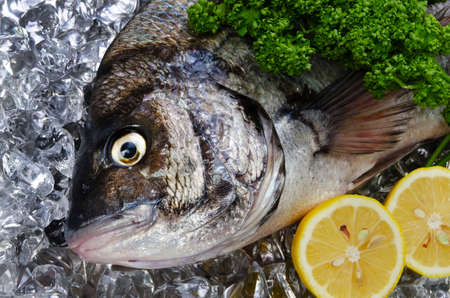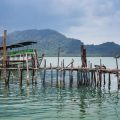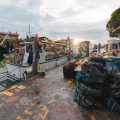1. Understanding Modern Sonar Technologies
When it comes to targeting walleye like a pro, modern electronics have completely changed the game. Gone are the days of simply dropping a line and hoping for the best. Today’s sonar technologies let you actually see what’s happening beneath the surface in incredible detail. Whether youre fishing massive reservoirs or small inland lakes, understanding how to use sonar tools like side imaging, down imaging, and live sonar can make all the difference.
Side Imaging vs Down Imaging vs Live Sonar
Each type of sonar has its strengths, and knowing when and how to use them helps you locate structure, depth changes, baitfish schools, and most importantly—walleye.
| Sonar Type | Main Use | Best For | How It Helps Walleye Anglers |
|---|---|---|---|
| Side Imaging | Scans wide areas to both sides of your boat | Finding structure like rock piles, weed edges, and drop-offs | Covers more water quickly to locate high-probability zones without spooking fish |
| Down Imaging | Gives a clear picture directly beneath your boat | Pinpointing fish holding tight to bottom or structure | Helps confirm if marks are walleye or just debris or baitfish schools |
| Live Sonar (e.g., Garmin LiveScope) | Real-time view of fish movement and lure presentation | Watching individual fish react to your bait in real time | Adjust tactics instantly based on fish behavior—hugely valuable during tough bites |
Why These Tools Matter in Walleye Fishing
Walleye are notorious for being finicky and changing locations throughout the day. They often relate to subtle underwater structures that are hard to find without advanced sonar. Side imaging lets you scan large areas fast, while down imaging helps you fine-tune your approach once youve located an area of interest. Live sonar takes it one step further by showing how active the fish are and whether they’re responding to your presentation.
Pro Tip:
If youre new to these tools, start by using side imaging to map out potential hot spots like points, humps, and transition lines. Once you’ve found something promising, switch to down imaging for a closer look, then use live sonar to dial in your presentation in real time.
The Bottom Line on Sonar Tech for Walleye Hunting
You don’t need to be a tech wizard to use this gear effectively. With just a little practice, modern sonar becomes your underwater eyes—showing you where the fish are, what theyre doing, and how you can catch more of them.
2. Setting Up Your Electronics for Maximum Efficiency
To consistently locate and catch walleye, your electronics setup needs to be dialed in with precision. Whether youre running a high-end sonar unit like a Humminbird HELIX or a Lowrance HDS, proper configuration can make the difference between a productive day on the water and just another boat ride. Here’s how pros fine-tune their systems for maximum clarity and target acquisition while cutting down on noise and interference.
Basic Setup: Dialing In Your Fish Finder
The first step is making sure your fish finder is mounted correctly and updated with the latest firmware. A transducer thats not level or improperly placed can send back distorted readings, leading to missed opportunities.
Recommended Settings Overview
| Setting | Recommended Adjustment | Purpose |
|---|---|---|
| Sensitivity | 70%–85% | Helps distinguish fish from structure; adjust based on water clarity |
| Contrast | Auto or slightly manual tweak | Enhances definition of objects and fish returns |
| Chart Speed | Match with boat speed | Keeps imaging proportional to movement for better interpretation |
| Frequency (CHIRP) | Medium/High CHIRP | Increases target separation and depth accuracy |
| Surface Clarity Filter | Low–Medium | Reduces surface clutter without losing shallow targets |
| Noise Rejection/Filter | Medium–High | Cuts out electrical interference from trolling motors, etc. |
Tuning GPS for Pinpoint Accuracy
Your GPS system isnt just for getting back to the launch — it’s essential for marking productive spots, tracking drift speed, and setting precise waypoints over submerged structures where walleye hold. Use high-accuracy settings like WAAS-enabled correction when available, and always double-check that your unit is calibrated properly before heading out.
Pro Tips:
- Name your waypoints clearly (e.g., “Gravel Drop 18ft”) so you can easily recall them later.
- Create trails to track your drift patterns — this helps identify feeding lanes during windy conditions.
- If your unit supports it, overlay sonar data onto your map screen to get real-time feedback of bottom transitions.
Reducing Interference Between Units
If youre running multiple sonar units or combining GPS with side imaging/down imaging, cross-talk or signal overlap can become an issue. To minimize this:
Steps to Reduce Electronic Interference:
- Avoid placing transducers too close together — stagger them if possible.
- Run separate power sources for each unit when feasible.
- Select different frequency ranges for each sonar device (e.g., one at 83kHz, the other at 200kHz).
- Use ferrite cores on power cables to filter out line noise.
Final Touches: Save & Test Custom Presets
Once youve got everything configured, save your favorite sonar and GPS settings as custom presets so you can quickly switch modes based on fishing conditions — whether youre vertical jigging in deep water or trolling along weed edges. Always test these settings in real-world situations; subtle tweaks often make a big difference depending on weather, water color, and depth changes.
![]()
3. Interpreting Sonar Readings Like a Pro
Understanding what your sonar is showing you is the key to consistently finding and catching walleye. Advanced sonar units can display a wealth of information, but it takes some practice to decode what youre really seeing. Heres how pros break down sonar readings to locate baitfish, gamefish, and ideal walleye habitat.
Identifying Baitfish vs. Gamefish
Baitfish usually show up on your sonar as small, scattered dots or tight clouds—these are often suspended in the water column or near structure. In contrast, walleye and other gamefish appear as distinct arches or solid marks, depending on your sonar settings. Pay attention to size, density, and movement patterns:
| Target Type | Sonar Appearance | Location Clues |
|---|---|---|
| Baitfish | Small dots/clouds, often grouped tightly | Suspended mid-water or hugging structure |
| Walleye/Gamefish | Arches or thick marks (depends on sensitivity) | Near baitfish, bottom transitions, or cover |
Reading Bottom Structure and Transitions
Walleye love areas where the bottom changes—this could be from soft mud to harder rock or gravel. On your sonar, these transitions are shown by changes in the thickness and color of the bottom line. A harder bottom typically returns a brighter, thinner line while a softer one looks thicker and less defined.
Bottom Hardness Indicators
| Bottom Type | Sonar Return |
|---|---|
| Hard (rock, gravel) | Bright, thin return line with strong second echo |
| Soft (mud, silt) | Dull, thick return with little to no second echo |
Spotting Walleye-Friendly Cover
Certain types of cover hold more walleye than others. Weeds near drop-offs, submerged timber, and rock piles are classic hotspots. These appear on sonar as irregular shapes off the bottom or above it. StructureScan or side imaging will give you a better view of these areas.
Common Walleye-Holding Cover Types
- Weed Edges: Show up as vertical clusters rising from the bottom; look for clean edges where weeds meet open water.
- Rock Piles: Appear as jagged bumps or humps on bottom; hard returns with shadows on side imaging.
- Timber: Vertical lines with gaps between them; often stacked close together.
Tweaking Your Settings for Better Clarity
A few quick adjustments can make a big difference when reading your sonar:
- Sensitivity: Increase until clutter appears, then dial back slightly.
- Color Palette: Choose high-contrast colors to distinguish fish from background.
- Chart Speed: Match boat speed for accurate returns (faster for trolling, slower for hovering).
- Zoom Function: Use split-screen zoom to focus on bottom 10 feet where walleyes often hold.
The more time you spend watching your electronics and comparing what you see with what’s actually below you, the better youll get at interpreting sonar like a seasoned pro.
4. Mapping and Waypoints: Building a Walleye Hotspot Database
One of the biggest advantages of using advanced electronics when targeting walleye is the ability to build your own database of productive fishing spots. By using contour mapping, setting waypoints, and creating custom routes, you can consistently return to high-percentage areas throughout the season. Heres how to make it all work together.
Understanding Contour Mapping
Modern fish finders with GPS and mapping software allow anglers to view detailed lake bottom contours. These maps show depth changes, drop-offs, humps, and flats—prime areas where walleyes are likely to hold depending on the season.
Why Contours Matter
Walleye behavior changes with water temperature and seasonal transitions. During spring, they may hang around shallow flats or rocky shorelines. In summer, they often move deeper to humps or breaklines. Contour maps let you visually identify these areas before you even cast a line.
Using Waypoints Effectively
Waypoints are GPS markers that let you save specific locations—like where you caught a big walleye or marked a school on sonar. Over time, placing waypoints helps build a history of productive spots so you’re not starting from scratch each trip.
Tips for Organizing Waypoints
| Waypoint Type | Color/Icon Suggestion | Description |
|---|---|---|
| Catching Spot | Green Fish Icon | Mark exact spots where youve landed fish. |
| Bait Schools | Blue Bait Ball Icon | Indicate where baitfish were located. |
| Structure (Rocks/Weedlines) | Brown Triangle Icon | Save key structural features holding fish. |
| No-Fish Zones | Red X Icon | Avoid unproductive zones or hazards. |
Creating Custom Routes for Consistent Results
If youre trolling or covering water with electronics, plotting custom routes between waypoints ensures youre hitting your best spots efficiently. Most chartplotters allow you to draw out paths that follow contour lines or connect several waypoints in a logical pattern.
Example Route Strategy by Season:
| Season | Tactic | Route Focus |
|---|---|---|
| Spring | Shallow Casting & Jigging | Route follows shoreline breaks and rocky points. |
| Summer | Trolling Deep Crankbaits or Spinners | Route loops around mid-lake humps and deep weed edges. |
| Fall | Suspended Jigging & Drifting Live Bait Rigs | Route targets transition zones near river channels and steep breaks. |
The Power of Historical Data
The more you use your electronics to mark catches, note conditions, and organize waypoints by date or season, the better youll get at predicting where walleyes will be. Over time, this builds what many pros call their “hotspot database”—an invaluable tool that turns good anglers into consistent producers.
Pro Tip:
Name your waypoints clearly (e.g., “June Hump 25ft” or “Late Summer Weedline”) so you can easily find and revisit them during future trips.
This strategic use of mapping tools and waypoint management not only saves time on the water but also increases your chances of staying on active fish no matter the season.
5. Integrating Weather, Water Conditions, and Sonar Data
When it comes to consistently locating and catching walleye, the pros don’t rely on just one piece of technology—they combine multiple sources of information to build a complete picture. By integrating weather patterns, water conditions, and sonar readings, anglers can anticipate where the fish will be and how theyre behaving.
Understanding the Role of Weather
Weather has a direct impact on walleye behavior. Changes in temperature, barometric pressure, wind direction, and cloud cover all influence how active walleye are and at what depth they’re likely to be found. For example:
| Weather Condition | Walleye Behavior | Pro Tip |
|---|---|---|
| Overcast Skies | More active during daytime | Try shallow flats or weed edges |
| Cold Front | Less active, holding deeper | Use finesse baits and slow presentations |
| Stable Weather | Consistent feeding patterns | Stick with your go-to spots and tactics |
Reading Water Conditions
Water clarity, temperature, and current flow all play a role in where walleyes position themselves. Clear water may push fish deeper during daylight hours, while stained or murky water can bring them shallower. Surface temperature can also clue you into seasonal transitions that affect walleye location.
Key Water Factors to Watch:
- Clarity: Impacts light penetration and feeding zones.
- Temperature: Influences metabolism and preferred depth.
- Current: Positions baitfish—and walleyes follow the food.
Merging Sonar with Environmental Clues
This is where advanced electronics shine. Modern fish finders with GPS mapping, side imaging, and down imaging allow you to not only spot fish but also understand their relationship to structure and environmental changes. Pros often mark waypoints when they notice activity during specific weather or water conditions—this helps pattern fish more effectively over time.
A Pro’s Workflow Example:
| Condition Observed | Sonar Observation | Tactical Adjustment |
|---|---|---|
| Mild wind from the south | Bait balls near mid-depth humps | Troll crankbaits over contour lines at 15-20 ft. |
| Slightly stained water post-rain | Larger marks tight to bottom structure | Vertical jigging with blade baits around rock piles |
The key takeaway here is that no single data point tells the full story. It’s when you start combining weather forecasts, water intel, and real-time sonar feedback that you unlock the ability to predict walleye movement like a seasoned pro. This multi-layered approach helps you stay one step ahead of the fish—and that’s what turns good days into great ones.
6. Real-World Applications: Case Studies from Pro Anglers
One of the best ways to understand how advanced electronics and sonar can transform your walleye fishing game is by looking at real-life examples. Pro anglers across the country rely on these tools not just for fun fishing trips, but during high-stakes tournaments where every bite counts. Let’s take a look at some scenarios where technology made all the difference.
Case Study 1: Finding Suspended Walleyes on Big Water
Angler: Mike Hanson – Minnesota-based tournament angler
Location: Lake of the Woods
Challenge: Walleyes were suspended in deep water and traditional trolling wasnt producing bites.
Solution: Mike used forward-facing sonar (LiveScope) to scan 30-40 feet ahead of his boat. He noticed pods of suspended fish and used pinpoint casting with jigging raps to trigger strikes.
Technology Used
| Device | Purpose |
|---|---|
| Garmin LiveScope | Real-time view of fish location and movement |
| Humminbird Helix 10 | Navigational mapping and side imaging |
This approach helped Mike secure a top-five finish in a regional event by staying mobile and targeting active fish zones that weren’t visible with conventional 2D sonar.
Case Study 2: Breaking Down Structure During a Tough Bite
Angler: Sarah Benton – Pro Circuit Competitor
Location: Green Bay, Wisconsin
Challenge: Post-frontal conditions made walleyes tight-lipped and hard to locate.
Solution: Sarah relied heavily on side imaging and down imaging to identify rock-to-sand transitions where walleyes were hunkered down. By marking waypoints and slowly working jigs through those zones, she picked off reluctant fish one by one.
Tactics Breakdown
| Tactic | Description |
|---|---|
| Side Imaging | ID structure edges and subtle changes in bottom contour |
| Waypoint Marking | Create a milk-run of productive areas for repeat passes |
| Slo-Pitch Jigging | A finesse method perfect for inactive fish hugging bottom structure |
This method didn’t produce fast action, but it was consistent enough to keep her in the top ten during an otherwise brutal bite window.
Case Study 3: Night Fishing with Down Imaging and GPS Trails
Angler: Tony Rizzo – Great Lakes Specialist
Location: Lake Erie
Challenge: Targeting nighttime walleyes feeding along breaklines without visual cues.
Solution: Tony used down imaging to confirm baitfish presence and GPS trail overlays to follow precise trolling paths parallel to drop-offs. This allowed him to repeat productive lines even in total darkness.
Main Tools Used
- Lorance HDS Live: For crisp down imaging returns showing bait clouds and predator shadows.
- Lakemaster Contour Maps: To identify subtle depth changes around offshore humps.
- Trolling Motor Integration: To stay on exact lines using Spot-Lock and heading lock features.
This combination helped Tony land multiple trophy-class walleyes during night tournaments when visibility was zero but sonar clarity was everything.
The Takeaway from the Pros
If there’s one thing these case studies prove, it’s that having the right electronics—and knowing how to use them—can be the ultimate difference-maker. Whether youre dealing with tough weather, spooky fish, or tricky structure, advanced sonar gives you eyes below the surface that no amount of guesswork can replace. For any angler looking to up their game, learning from how the pros apply these tools in real situations is an invaluable step toward success.


